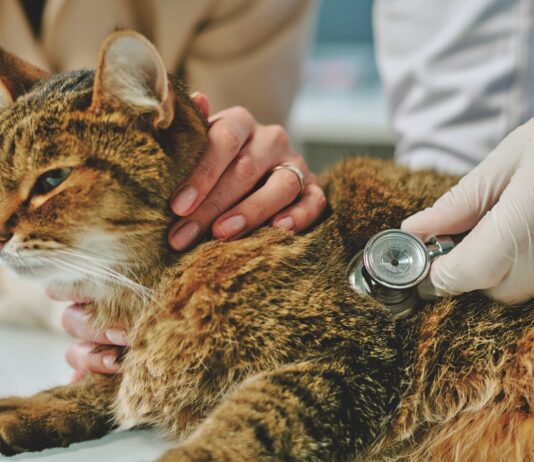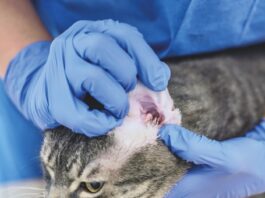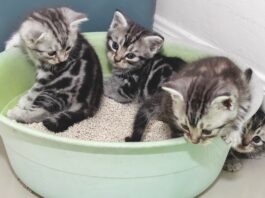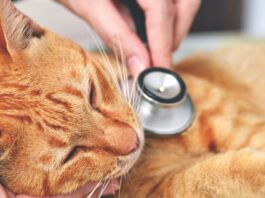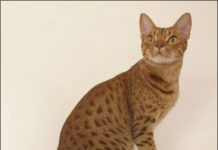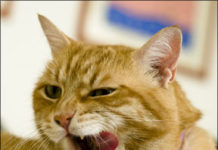A Guide to Anesthesia for Cats
Any surgical procedure that will be painful to your cat will require that the animals pain perception be dulled, if not totally blocked, by an anesthetic of some sort. Understandably, some cat owners find the notion that a pet will be placed under anesthesia a frightening prospect. "Theres always a risk," acknowledges James Flanders, DVM, an associate professor of surgery at Cornell Universitys College of Veterinary Medicine. "But if the cat is known to be in generally good health and if the anesthetic drugs are used properly, the chance that something will go wrong is very slim."
Feline Intestinal Disorders
Intestinal disorders rank among those most frequently treated by veterinarians at local clinics and large referral hospitals throughout the U.S. According to Melanie Craven, BVM, an internist and researcher in gastroenterology at Cornell Universitys College of Veterinary Medicine, vomiting, diarrhea and dramatic weight loss are the most common signs of feline intestinal disease in cats. However, she notes, subtler signs such as lethargy and appetite fluctuations can also suggest the presence of an intestinal disorder. Some of these disorders may be secondary to conditions originating in other organs, such as the thyroid gland, liver, kidneys and pancreas. But according to Dr. Craven, the problems usually originate in either the upper or lower segments of a cats intestines.
Ask Elizabeth: January 2011
Our dog came home from the kennel last week with a bad case of kennel cough. Hes on antibiotics and hes gradually getting better. However, now our two cats are also coughing. Is it possible that they have kennel cough, even though they did not go to the kennel and they are cats? I never heard of cats getting kennel cough. If they have kennel cough, should they be treated with antibiotics, as well?
Vaccinations: The Benefits and Risks
During the past half-century, no fewer than 10 vaccines have been developed that, according to their manufacturers, can protect your cat against a wide variety of lethal feline diseases. In general, these claims of efficacy have been justified. According to Fred Scott, DVM, PhD, professor emeritus of virology at Cornell Universitys College of Veterinary Medicine and the founding director of the Cornell Feline Health Center, the vaccines have been responsible for "a tremendous improvement in feline health." A prime example is the vaccine created to protect against the feline panleukopenia virus (FPV). "Prior to the late 1960s and early 1970s," says Dr. Scott, "half of all cats that passed through a shelter developed panleukopenia within a few days - and as many as 90 percent of them died from it.
Ask Elizabeth: December 2010
When Dr. Lucas came into the room I was too embarrassed to admit that Id been peeking at Lilys record so instead of asking her, Im asking you, Elizabeth: What does that description mean? In particular Im curious about the mackerel tabby part; Ive always called Lily a tiger cat, which I think is another name for tabby … but mackerel sounds fishy!
Short Takes: December 2010
Researchers developed a questionnaire for evaluation of cat owners perception of and knowledge about vaccination of cats, with owners asked to fill out a separate questionnaire for each cat they owned. A total of 3,163 questionnaires were evaluated ("Use of a web-based questionnaire to explore cat owners attitudes towards vaccination in cats," Veterinary Record, 2010). Vaccination as a kitten was the strongest predictor of up-to-date vaccination status, followed closely by plans to take the cat to a boarding cattery or cat show in the coming year. Owners who ranked the severity of infectious diseases or veterinary advice as very important were more likely to vaccinate their cats than owners who perceived these factors as less important.
Searching for Signs of Pain in Your Cat
Is there a clear way that we can tell that a cat is in pain? According to Andrea Looney, DVM, a senior lecturer in anesthesiology at the Cornell University Hospital for Animals, "We look at two categories of clinical signs - physiologic and behavioral. The physiologic signs include such indicators as heart rate, temperature, respiratory rate, blood pressure and the levels of certain stress hormones in the blood. "But these indicators are not as reliable as the behavioral signs," she continues. "Each cat is an individual, and we try to look at how they normally behave and how that behavior is different when they come in with complaints.
Can Acupuncture Help Your Pet?
Three or four decades ago, few cat owners or veterinary practitioners in the U.S. knew anything whatsoever about acupuncture, the centuries-old Chinese system of health care that aims to treat physical disorders and their accompanying pain by inserting needles into specific points on a patients body. Today, thousands of veterinarians throughout the nation routinely practice acupuncture in their clinics, and countless cats are benefiting from it. "Im certainly an acupuncture advocate," says Andrea Looney, DVM, a senior lecturer in anesthesiology at the Cornell University Hospital for Animals. "I use it in treating between 10 percent and 20 percent of the patients that I see - not only cats, but dogs, horses and other animals as well." Dr. Looney stresses that she relies on acupuncture as a complementary technique, always using it in conjunction with the standard practices of Western veterinary medicine.
Short Takes: November 2010
There is a growing understanding of osteoarthritis (OA) - also called degenerative joint disease - in cats that has led to investigation of the clinical signs, radiographic findings and also treatments. Cats are very good at compensating for orthopedic diseases, and therefore the clinical signs of arthritis are more difficult to detect and are different than those seen in dogs.
Toxoplasmosis: The Facts
Toxoplasmosis is a fairly common zoonosis (a disease that can be shared between humans and animals); 30 to 40 percent of adult humans, and roughly the same percentage of cats, have antibodies that indicate prior exposure to the organism that causes the disease. Nevertheless, theres still a lot of misinformation regarding toxoplasmosis. The disease poses a threat primarily to fetuses and to immunosuppressed patients, but an understanding of the organisms life cycle, how transmission occurs and can be avoided, and the signs of infection can greatly reduce the risk of serious disease.
Ask Elizabeth: November 2010
Dear Elizabeth, I cant believe Im writing this, but we have bed bugs in our home. We recently vacationed in Europe, and evidently brought home some unwanted hitchhikers. I thought only low rent motels were a source of bed bugs, but we stayed at beautiful, exclusive hotels, and now I find myself wondering what went wrong.Weve hired a licensed exterminator and will move out of our home when the exterminator is using pesticides in the house, but Im concerned for our cats. Should we move them out too and, if so, is there any risk of the bed bugs hitching a ride on the cats?
Nasal Disease: Understand the Signs
Does your cat have a bad case of the sniffles? Its probably nothing to worry about. Just like you, your cat is apt to come down with a minor respiratory infection now and then, and it will pass. But if the runny nose that persists for more than a few days - and especially if the secretions thicken and become darker in color - you should take your pet to the veterinarian for an examination.

